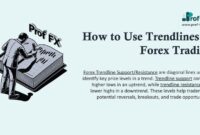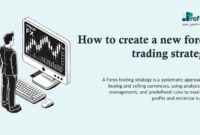A dealer is different than a broker, though there are broker/dealers. A dealer is who makes a market, which is to say they are responsible for maintaining the bid-offer clients trade on, and taking the other side of the client’s trade.
A broker is a sales organization or individual whose job it is to entice clients to open accounts through them and are compensated by the fees generated when the client trades.
Some brokers are also dealers which is to say they have a brokerage office and dealing desk which are separate departments. It is neither department’s job to actually trade.
The broker’s job is to sell, and the dealer’s job is to “make a market” for the firm’s clients and to not lose the firm’s money.
The vast majority of dealers today have automated their trading desks, meaning the second you place a trade with them they do the opposite trade on an institutional bank feed — a bank feed is similar to the bid / offer you see on your trading platform but only tighter.
Today bank feeds can take orders as small as 10,000 which allows dealers to maintain relatively tight spreads for even smaller contracts. The institutional bank feed is essential to the whole market-making process and acts as a central market of sorts; the better ones are comprised of as many as 10 or 12 individual dealers such as Deutsche Bank, Goldman Sachs, Citibank, etc.
Unlike the retail bid/offer, most of you see, the bank feed does not have to go sellers to buy it or go bid to sell it. It’s similar to the futures market where it is possible to actually buy the bid and sell the offer without price having to trade 2 or 3 pips thru you.
If GBP/JPY 143.535 at 143.554 on the bank feed – as it was as of this writing – you can actually bid 143.536 and have a good shot at getting filled. Most brokers have access to better bank feeds which dictates if they can compete for the bulk of professional traders and hedge funds business.
Even broker/dealers who are market makers for their own clients have access to the larger bank feeds. They have to because it is not their job to trade, but to take the other side of their client’s trades and to not lose money.
The way to do that is to entice clients to trade with them on a 6 to 8 pips spread and lay it off – offset the trade — on a 1.5 to 2.5 pip spread bank feed.
Technically the only “trader” in the process is the client. The dealer is more of a mechanic.
Most individual brokers/salespeople — aren’t familiar w/ the dealer side of the business and most dealers – computer engineers these days who call themselves traders around people who don’t know better — stay away from the sales side of the business.
Many firms employ market strategists — I’m not that familiar with what these people do other than write reports about yesterday’s news, but they are employed by the sales side of the business.
A dealer generally will have one or two servers for their clients in addition to having access to an institutional bank feed. An ECN may employ several banks feeds.
There is likely one feed for smaller clients — this might have just one bank or dealer making the market and thus a wider spread — and another for medium-sized clients — this may be the collective feed of a few dealers.
Experienced clients, who by definition know what they are doing are often given access directly to an institutional bank feed where the spread is padded slightly or a commission is built in per million.
With the advent of dealers becoming more automated spreads have gotten better and the human element of a physical dealer toying with a bid and offer where he knows a client’s position and inclination has come close to being eliminated in my opinion.
There still is the common misconception that dealers are out to “pick clients off”, and I can’t speak to that notion but my guess is more times than not it is a function of a fast market as most trading platforms are automated.
The more dealers on a feed generally the more liquid it will be i.e.: the tighter the spreads will be.
Unfortunately, accounts of less than several thousand dollars I suspect are relegated to the price feed w/ the least liquidity. This is also the feed I suspect which provides its salespeople with the highest pay-out — or rebate – as unregistered agents refer to it.
When the markets are very volatile you need to use market orders in my opinion and you have to double-check to make sure you are filled when you hit that button.
One-click trading is essential for most professional short-term traders. Most people who complain about bad fills are not aware that when they hit the button it doesn’t necessarily mean they are entering a market order but instead may be lifting a fixed offer or selling a particular bid.
You have to know the difference, otherwise, when you miss the trade you will blame the dealer when in fact it was you who didn’t understand that someone else beat you to the trade. Markets are dynamic and volatile by nature.
When a client asks me about a fixed spread I know they are green. Why would a trader want a spread to be fixed wide???
The IB, or introducing broker is a broker/salesman. The large dealers will use IB’s to introduce business to them and share the fees generated from the pip spread, in exchange for recommending their dealer’s services.
The IB is primarily a sales force for the dealers. The difference between IB’s is some are independent and have leeway in the fees — spreads –they can get for their clients, while some are dependent on using just one dealer and one price feed.
Brokers and IB’s can either be registered or not and the primary difference here is an NFA registered individual can have anything she writes or says reviewed by a regulatory agency.
It is often easy to tell if a broker or IB is registered by reviewing the content and context of their sales material.
If you plan on staying in the trading game you need to understand the playing field, and it definitely has its bumps!





